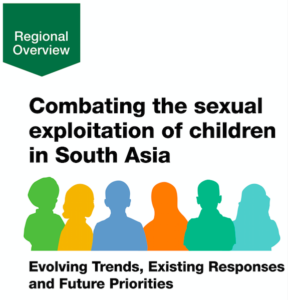Traditional and emerging forms of sexual exploitation that exist ‘side-by-side’ are putting the children of South Asia at risk, says an ECPAT report.

Combating the sexual exploitation of children in South Asia claims that while the sub-continent has long been a place where the sexual exploitation of children is a serious concern, today, children are more prone to be victimized in both the older offline world, and the newer online world, where there is a continuum of abuse and exploitation.
The report, which looked at the situation for children in Afghanistan, Bangladesh, Bhutan, India, the Maldives, Nepal, Pakistan and Sri Lanka, says that in South Asia, early and forced marriage, and the trafficking of children for sexual purposes are established norms in many of these societies. However, today, evolving and emerging forms of sexual exploitation are beginning to increase in prominence.
“All across South Asia, we have places that have always been filled with trafficked girls – and we have old practices such as child and early forced marriage. What is new however, is that today these may co-exist with online child sexual abuse, cyber bullying, and other forms of sexual exploitation through social media and other online platforms,” says Rajib Haldar, ECPAT Regional Coordinator for South Asia.
The report says that there are different types of harm that are increasing for children in South Asia. “We see child sexual abuse material created, and exchanged both regionally and globally,” says Haldar. “Unfortunately, this is a borderless crime. We are also seeing sexual harassment and extortion of children online, mainly affecting girls. In these cases, the perpetrators are generally known to the victims, often peers or adults in the circle of trust. There are cases of sexualized images shared on social media, and these have been moving from more open platforms such as Facebook, to more private apps such as WhatsApp or Snapchat.”
In South Asia, young people are at the forefront of Internet use. For example, in Sri Lanka, more than half of young people are online; in Bangladesh, about 85 percent of the country’s 85 million Internet users are youth; in Pakistan close to half of under 18s spend more than five hours a day online; and India has one of the highest numbers of smart phone users among young people on the planet.
The ECPAT research also points a finger at the region’s burgeoning tourism industry, warning that South Asian countries need to move quickly to better understand and counter the threat posed to children through this sector. An adverse impact of the expansion of the travel and tourism sector in South Asia is the increased threat that travelling child sex offenders pose to children. And it is not only foreigners that are a danger. Cases of domestic travelling sex offenders are also on the rise.
Although solid data is not available, previous ECPAT research suggests that the sexual exploitation of children in travel and tourism has been moving beyond traditional tourist locations and has started emerging in most of the countries in the region.